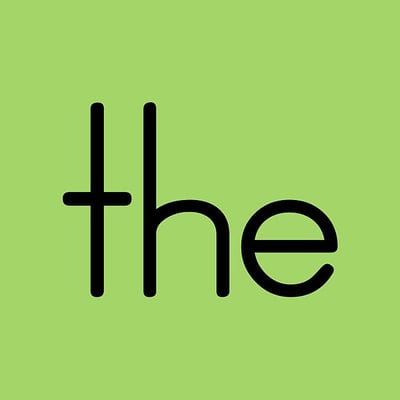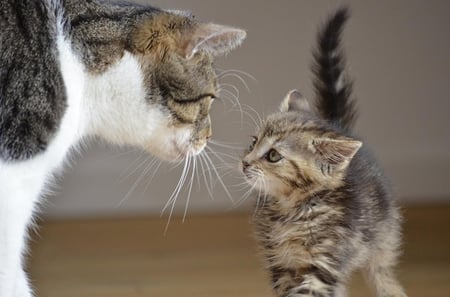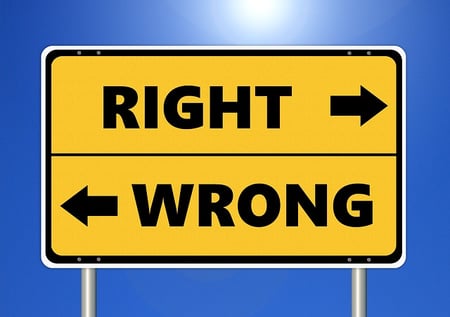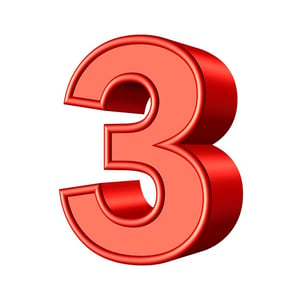The word “there” have multiple functions. In verbal and written English, the word can be used as an adverb, a pronoun, a noun, an interjection, or an adjective.
- Adverb
This word is classified as an adverb if it is used to modify a verb in the sentence. For example, in the sentence below:
They went there only to find out that it was postponed.
The word “there” is considered as an adverb because it describes the verb “went.”
Definition:
a. in or at that place
- Example:
- We went on to London and stayed there two weeks.
b. at that point or stage
- Example:
- Stop right there before you say something you’ll regret.
- Pronoun
Sometimes, the word “there” is categorized under pronouns, if it is used to replace a noun in the sentence. For instance, in the sample sentence below:
Hello there!
The word “there” is considered as a pronoun because it substitutes the name of the person, in this case, You.
Definition:
a. used as an indefinite substitute for a name
- Example:
- Hi there!
- Noun
There are also some cases wherein the word “there” is considered as a noun, which refers to a particular point or place. Take for example, the sentence below:
There is no there and no here in pure space.
The word “there” is used as a noun, which refers to a location.
Definition:
a. that place; that point
- Example:
- You take it from there.
- Interjection
Other times, the word “there” is categorized as an interjection, when it is used to exclaim or emphasize something. In the sample sentence below:
There, it’s finished!
The word “there” is used for emphasis or to draw attention to a particular thing.
Definition:
a. used to focus attention on something and express satisfaction or annoyance at it
- Example:
- There, I told you my parents wouldn’t mind!
- Adjective
In some cases, the word “there” is considered as an adjective when it is used to modify a noun or a pronoun, as seen in the sample sentence below:
She is there to answer any questions you might have.
The word “there” modifies the pronoun “she” and is therefore considered as an adjective.
Definition:
a. capable of being relied on for support or help
- Example:
He is always there for her.
b. used for emphasis, especially after a demonstrative pronoun or a noun modified by a demonstrative adjective
- Example:
- Those guys there can tell you.
The word there is a commonly used word that can be difficult to classify because of its various roles in a sentence. There can be used as an adverb, pronoun, adjective, and sometimes as an interjection. But in grammatical constructions like there is or there are, there is considered an expletive. This tiny word can create a lot of confusion because the context can be so varied.
Study the following guide to help you understand how to label and classify the various roles of the word there.
The chart can help, but also pay close attention to specific grammatical constructions when there is or there are start the sentence. In these contexts, the word there is classified as an expletive. An expletive is an “extra word” not grammatically related to the rest of the sentence. Mind you, starting a sentence with these constructions will lead to wordy sentence writing, and they’re usually too passive for most written compositions. This occurs because expletives are used to postpone the subject to build a little suspense for the reader. Authors like to use it like a bit of “seasoning” to keep readers tuned in. Here’s an example sentence demonstrating these structures:
There are explosives hidden under the railway bridge! (Delayed Subject — explosives)
vs.
Explosives are hidden under the railway bridge! (There is omitted to get to the point.)
You can tell the first example expresses more drama, right? Used sparingly, expletive constructions with there is or there are can be titillating. Just be careful!
Hint: If a sentence beginning with a there is or there are construction can be rewritten without the word there, you are working with the expletive form of the word.
In closing, there’s also the soothing phrase, “There, there…”, but we will save that for another time! Thanks for reading!
The word “there” is used as a noun, which refers to a location.
Contents
- 1 Is the word there an adverb?
- 2 What type of word is here or there?
- 3 Which pronoun is there?
- 4 Which type of adverb is there?
- 5 Is the word there an adjective?
- 6 What kind of adjective is there?
- 7 Are Here and there adverbs?
- 8 Is there any or is there a?
- 9 Is it on their way or on there way?
- 10 Is there an adverb of place?
- 11 How many kinds of pronouns are there?
- 12 Is some a word?
- 13 What are the 3 types of adverbs?
- 14 What are the adjectives words?
- 15 What are the 8 types of adverbs?
- 16 Is all an adjective or adverb?
- 17 Can there be a verb?
- 18 What are types of noun?
- 19 What is noun example of noun?
- 20 What are the three types of adjectives?
Is the word there an adverb?
The word “there” is a commonly used word that can be difficult to classify because of the various roles it can play in a sentence. There can be used as an adverb, pronoun, noun, or adjective, and sometimes as an interjection.
What type of word is here or there?
adverbs
Here and there are adverbs.
Which pronoun is there?
Other Types of Pronoun
| Pronoun Type | Members of the Subclass |
|---|---|
| Possessive | mine, yours, his, hers, ours, theirs |
| Reflexive | myself, yourself, himself, herself, itself, oneself, ourselves, yourselves, themselves |
| Reciprocal | each other, one another |
| Relative | that, which, who, whose, whom, where, when |
Which type of adverb is there?
Since verbs are such integral parts of our everyday language, their modifiers are also multi-faceted. To start, there are five types of adverbs you should familiarize yourself with: adverbs of degree, frequency, manner, place, and time.
Is the word there an adjective?
In some cases, the word “there” is considered as an adjective when it is used to modify a noun or a pronoun, as seen in the sample sentence below: She is there to answer any questions you might have. The word “there” modifies the pronoun “she” and is therefore considered as an adjective.
What kind of adjective is there?
There are three degrees of adjectives: Positive, comparative, superlative. These degrees are applicable only for the descriptive adjectives.
Are Here and there adverbs?
Here and there are common adverbs of place. They give a location relative to the speaker. With verbs of movement, here means “towards or with the speaker” and there means “away from, or not with the speaker”.
Is there any or is there a?
We must use ‘a’ with singular countable nouns and ‘any’ with uncountable nouns. We use ‘is’ with both singular countable nouns and uncountable nouns.’ There is only one, so we have to use the singular form.
Is it on their way or on there way?
on the way
Also, on one’s way. In the process of coming, going, or traveling; also, about to come. For example, The mail plane is on the way, or She is on her way out the door, or Winter is on the way.
Is there an adverb of place?
The most common adverbs of place are ‘here’ and ‘there’. We use ‘here’ when the position is near the speaker, and ‘there’ when the position is further away.
How many kinds of pronouns are there?
There are four types of pronouns: subject pronouns, object pronouns, possessive pronouns, and demonstrative pronouns. Pronouns are one of the eight parts of speech. Pronouns take the place of a person, place, or thing in sentences once the context is understood.
Is some a word?
What type of word is ‘some’? Some can be a pronoun, an adverb or a determiner – Word Type.
What are the 3 types of adverbs?
Now, there are three kinds of adverbs, and they are as follows.
- Simple adverbs.
- Interrogative adverbs.
- Relative adverbs.
What are the adjectives words?
Adjectives are words that describe the qualities or states of being of nouns: enormous, doglike, silly, yellow, fun, fast. They can also describe the quantity of nouns: many, few, millions, eleven.
What are the 8 types of adverbs?
There are at least eight different kinds of adverbs and these are adverbs of manner, adverbs of frequency, adverbs of time and place, adverbs of relative time, adverbs of degree, adverbs of quantity, adverbs that focus, adverbs that function as attitude markers.
Is all an adjective or adverb?
In spoken and written English, the word “all” has several functions. It can be used as a adjective, an adverb, a noun, or a pronoun. This word can be categorized as an adjective if it is used to introduce a noun in the sentence. Generally, the word “all” expresses the entire quantity or extent of something.
Can there be a verb?
The most common verb used to express existence in English is the verb “be,” and sentences beginning with “there is” or “there are,” for example, are extremely common in English.
What are types of noun?
Types Of Nouns
- Common noun.
- Proper noun.
- Concrete noun.
- Abstract noun.
- Collective nouns.
- Count and mass nouns.
What is noun example of noun?
A noun is a word that refers to a thing (book), a person (Betty Crocker), an animal (cat), a place (Omaha), a quality (softness), an idea (justice), or an action (yodeling). It’s usually a single word, but not always: cake, shoes, school bus, and time and a half are all nouns.
What are the three types of adjectives?
Adjectives, depending on their function, are of three types: adjectives of quality, quantity, and number. These three types differ in their roles of describing what kind, how much, or how many.
-
#1
Hello everyone,
How are you, all?
However, «There is a tube-well in our village.» Which parts of speech the word ‘there’ is?
Thank you very much.
-
#2
Pronoun. It plays the role of a dummy/ grammatical subject in the sentence.
-
#3
That’s right. It participates in subject-auxiliary inversion, in tag questions, and in infinitive subjects marked with ‘for’, all of which are properties of noun phrases that are the subject of the sentence:
Is there
a tube-well in our village?
There is a tube-well in our village,
isn’t there
?
It is desirable
for there to be
a tube-well in our village.
These grammatical properties (and its weak pronunciation) all distinguish it from the place word ‘there’.
It depends who you want to satisfy with your classification. If you must classify into the traditional eight parts of speech, there is considered a pronoun (Dictionary.com — see below), specifically a dummy subject (Wikipedia), usually termed «existential there» 1,2,3 — search term in Google Books.
there
pronoun
7.
(used to introduce a sentence or clause in which the verb comes before its subject or has no complement): There is no hope.
In the phrase «there is» there is grammatically unnecessary, but it has two uses. One, not to end an existential sentence with a being verb. For instance, see this dissertation, page 63 (though read Chapter IV, pp. 53-115 if you’re really interested):
For example, King Alfred could write “swae feawa hiora waeron” (so few of them were), but to translate this into more modern English, we need to supply a subject slot filler as in “so few of them there were” or more naturally “there were so few of them.”
The other use, as in your example, is to emphasize the existence of the subject. So «A book is on the table» is perfectly fine, but the existence of the book is underlined in the sentence «There is a book on the table.» (That’s why «there» is termed existential — it’s only used in existential clauses.)
However, classifying «there» as a pronoun is controversial since a pronoun is defined as a substitute for a noun. There is not a substitute for a more specific noun. Along these lines, in the 8-part scheme, you should logically call it a noun. I haven’t found a source to back this up, though, except for the definition of a noun.
But since even a noun must refer to an entity, and there does not, existential there is not either a noun or a pronoun.
If you’re still interested, you probably don’t mind transcending the artificial part-of-speech system. In fact, the reason I can’t find a direct refutation of there as pronoun is that every scholarly work I’ve come across does not refer to eight-parts-of-speech period. So, after getting rid of the clutter, there doesn’t have to be classified with either nouns or pronouns. It’s existential there. It’s a dummy subject. But it’s not a pronoun.
Because really, you can’t group it with any other word and call it a homogeneous category. It even presents differences from the dummy it.
As to the punctuation problem, put the question mark outside of the quotes, and you’ll be fine:
What part of speech is there in the sentence «There is a book on the table»?
This is an example of the existential there, which is grammatically the subject. (Sometimes called a dummy subject.)
«There» used this way is followed by a form of the verb «be» and then an indefinite noun. «There» is never stressed when it is used this way.
When «there» is an adverb at the beginning of a sentence, it gets stressed. It can be followed by a verb, noun, or prepositional phrase (and probably a few other things). You could substitute «here» for «there» and the sentence would still make sense. These are all adverbial uses of «there»:
There sat a funny little man.
There Dad had an accident years ago.
There under the table I found my shoe.
Here are similar sentences with the existential «there». Note the verb «be» in all of them:
There’s a funny little man sitting there.
There’s where Dad had an accident years ago.
There was my shoe under the table.
When you start breaking it down, the English language is pretty complicated—especially if you’re trying to learn it from scratch! One of the most important English words to understand is the.
But what part of speech is the word the, and when should it be used in a sentence? Is the word the a preposition? Is the a pronoun? Or is the word the considered a different part of speech?
To help you learn exactly how the word the works in the English language, we’re going to do the following in this article:
- Answer the question, «What part of speech is the?»
- Explain how to use the correctly in sentences, with examples
- Provide a full list of other words that are classified as the same part of speech as the in the English language
Okay, let’s get started learning about the word the!
In the English language the word the is classified as an article, which is a word used to define a noun. (More on that a little later.)
But an article isn’t one of the eight parts of speech. Articles are considered a type of adjective, so «the» is technically an adjective as well. However, «the» can also sometimes function as an adverb in certain instances, too.
In short, the word «the» is an article that functions as both an adjective and an adverb, depending on how it’s being used. Having said that, the is most commonly used as an article in the English language. So, if you were wondering, «Is the a pronoun, preposition, or conjunction,» the answer is no: it’s an article, adjective, and an adverb!
While we might think of an article as a story that appears in a newspaper or website, in English grammar, articles are words that help specify nouns.
The as an Article
So what are «articles» in the English language? Articles are words that identify nouns in order to demonstrate whether the noun is specific or nonspecific. Nouns (a person, place, thing, or idea) can be identified by two different types of articles in the English language: definite articles identify specific nouns, and indefinite articles identify nonspecific nouns.
The word the is considered a definite article because it defines the meaning of a noun as one particular thing. It’s an article that gives a noun a definite meaning: a definite article. Generally, definite articles are used to identify nouns that the audience already knows about. Here’s a few examples of how «the» works as a definite article:
We went to the rodeo on Saturday. Did you see the cowboy get trampled by the bull?
This (grisly!) sentence has three instances of «the» functioning as a definite article: the rodeo, the cowboy, and the bull. Notice that in each instance, the comes directly before the noun. That’s because it’s an article’s job to identify nouns.
In each of these three instances, the refers to a specific (or definite) person, place, or thing. When the speaker says the rodeo, they’re talking about one specific rodeo that happened at a certain place and time. The same goes for the cowboy and the bull: these are two specific people/animals that had one kinda terrible thing happen to them!
It can be a bit easier to see how definite articles work if you see them in the same sentence as an indefinite article (a or an). This sentence makes the difference a lot more clear:
A bat flew into the restaurant and made people panic.
Okay. This sentence has two articles in it: a and the. So what’s the difference? Well, you use a when you’re referring to a general, non-specific person, place, or thing because its an indefinite article. So in this case, using a tells us this isn’t a specific bat. It’s just a random bat from the wild that decided to go on an adventure.
Notice that in the example, the writer uses the to refer to the restaurant. That’s because the event happened at a specific time and at a specific place. A bat flew into one particular restaurant to cause havoc, which is why it’s referred to as the restaurant in the sentence.
The last thing to keep in mind is that the is the only definite article in the English language, and it can be used with both singular and plural nouns. This is probably one reason why people make the mistake of asking, «Is the a pronoun?» Since articles, including the, define the meaning of nouns, it seems like they could also be combined with pronouns. But that’s not the case. Just remember: articles only modify nouns.
Adjectives are words that help describe nouns. Because «the» can describe whether a noun is a specific object or not, «the» is also considered an adjective.
The as an Adjective
You know now that the is classified as a definite article and that the is used to refer to a specific person, place, or thing. But defining what part of speech articles are is a little bit tricky.
There are eight parts of speech in the English language: nouns, pronouns, verbs, adverbs, adjectives, prepositions, conjunctions, and interjections. The thing about these eight parts of speech in English is that they contain smaller categories of types of words and phrases in the English language. Articles are considered a type of determiner, which is a type of adjective.
Let’s break down how articles fall under the umbrella of «determiners,» which fall under the umbrella of adjectives. In English, the category of «determiners» includes all words and phrases in the English language that are combined with a noun to express an aspect of what the noun is referring to. Some examples of determiners are the, a, an, this, that, my, their, many, few, several, each, and any. The is used in front of a noun to express that the noun refers to a specific thing, right? So that’s why «the» can be considered a determiner.
And here’s how determiners—including the article the—can be considered adjectives. Articles and other determiners are sometimes classified as adjectives because they describe the nouns that they precede. Technically, the describes the noun it precedes by communicating specificity and directness. When you say, «the duck,» you’re describing the noun «duck» as referring to a specific duck. This is different than saying a duck, which could mean any one duck anywhere in the world!
When «the» comes directly before a word that’s not a noun, then it’s operating as an adverb instead of an adjective.
The as an Adverb
Finally, we mentioned that the can also be used as an adverb, which is one of the eight main parts of speech we outlined above. Adverbs modify or describe verbs, adjectives, or other adverbs, but never modify nouns.
Sometimes, the can be used to modify adverbs or adjectives that occur in the comparative degree. Adverbs or adjectives that compare the amounts or intensity of a feeling, state of being, or action characterizing two or more things are in the comparative degree. Sometimes the appears before these adverbs or adjectives to help convey the comparison!
Here’s an example where the functions as an adverb instead of an article/adjective:
Lainey believes the most outrageous things.
Okay. We know that when the is functioning as an adjective, it comes before a noun in order to clarify whether it’s specific or non-specific. In this case, however, the precedes the word most, which isn’t a noun—it’s an adjective. And since an adverb modifies an adjective, adverb, or verb, that means the functions as an adverb in this sentence.
We know that can be a little complicated, so let’s dig into another example together:
Giovanni’s is the best pizza place in Montana.
The trick to figuring out whether the article the is functioning as an adjective or an adverb is pretty simple: just look at the word directly after the and figure out its part of speech. If that word is a noun, then the is functioning as an adjective. If that word isn’t a noun, then the is functioning like an adverb.
Now, reread the second example. The word the comes before the word best. Is best a noun? No, it isn’t. Best is an adjective, so we know that the is working like an adverb in this sentence.
How to Use The Correctly in Sentences
An important part of answering the question, «What part of speech is the word the?» includes explaining how to use the correctly in a sentence. Articles like the are some of the most common words used in the English language. So you need to know how and when to use it! And since using the as an adverb is less common, we’ll provide examples of how the can be used as an adverb as well.
Using The as an Article
In general, it is correct and appropriate to use the in front of a noun of any kind when you want to convey specificity. It’s often assumed that you use the to refer to a specific person, place, or thing that the person you’re speaking to will already be aware of. Oftentimes, this shared awareness of who, what, or where «the» is referring to is created by things already said in the conversation, or by context clues in a given social situation.
Let’s look at an example here:
Say you’re visiting a friend who just had a baby. You’re sitting in the kitchen at your friend’s house while your friend makes coffee. The baby, who has been peacefully dozing in a bassinet in the living room, begins crying. Your friend turns to you and asks, «Can you hold the baby while I finish doing this?»
Now, because of all of the context surrounding the social situation, you know which baby your friend is referring to when they say, the baby. There’s no need for further clarification, because in this case, the gives enough direct and specific meaning to the noun baby for you to know what to do!
In many cases, using the to define a noun requires less or no awareness of an immediate social situation because people have a shared common knowledge of the noun that the is referring to. Here are two examples:
Are you going to watch the eclipse tomorrow?
Did you hear what the President said this morning?
In the first example, the speaker is referring to a natural phenomenon that most people are aware of—eclipses are cool and rare! When there’s going to be an eclipse, everyone knows about it. If you started a conversation with someone by saying, «Are you going to watch the eclipse tomorrow?» it’s pretty likely they’d know which eclipse the is referring to.
In the second example, if an American speaking to another American mentions what the President said, the other American is likely going to assume that the refers to the President of the United States. Conversely, if two Canadians said this to one another, they would likely assume they’re talking about the Canadian prime minister!
So in many situations, using the before a noun gives that noun specific meaning in the context of a particular social situation.
Using The as an Adverb
Now let’s look at an example of how «the» can be used as an adverb. Take a look at this sample sentence:
The tornado warning made it all the more likely that the game would be canceled.
Remember how we explained that the can be combined with adverbs that are making a comparison of levels or amounts of something between two entities? The example above shows how the can be combined with an adverb in such a situation. The is combined with more and likely to form an adverbial phrase.
So how do you figure this out? Well, if the words immediately after the are adverbs, then the is functioning as an adverb, too!
Here’s another example of how the can be used as an adverb:
I had the worst day ever.
In this case, the is being combined with the adverb worst to compare the speaker’s day to the other days. Compared to all the other days ever, this person’s was the worst…period. Some other examples of adverbs that you might see the combined with include all the better, the best, the bigger, the shorter, and all the sooner.
One thing that can help clarify which adverbs the can be combined with is to check out a list of comparative and superlative adverbs and think about which ones the makes sense with!
3 Articles in the English Language
Now that we’ve answered the question, «What part of speech is the?», you know that the is classified as an article. To help you gain a better understanding of what articles are and how they function in the English language, here’s a handy list of 3 words in the English language that are also categorized as articles.
|
Article |
Type of Article |
What It Does |
Example Sentence |
|
The |
Definite Article |
Modifies nouns by giving them a specific meaning |
Please fold the laundry. Do you want to go to the concert? |
|
A |
Indefinite Article |
Modifies a noun that refers to a general idea; appears before nouns that begin with a consonant. |
Do you want to go to a concert? |
|
An |
Indefinite Article |
Modifies a noun that refers to a general idea; appears before nouns that begin with a vowel. |
Do you want to go to an arcade? Let’s get an iguana. |
What’s Next?
If you’re looking for more grammar resources, be sure to check out our guides on every grammar rule you need to know to ace the SAT (or the ACT)!
Learning more about English grammar can be really helpful when you’re studying a foreign language, too. We highly recommend that you study a foreign language in high school—not only is it great for you, it looks great on college applications, too. If you’re not sure which language to study, check out this helpful article that will make your decision a lot easier.
Speaking of applying for college…one of the most important parts of your application packet is your essay. Check out this expert guide to writing college essays that will help you get into your dream school.
Need more help with this topic? Check out Tutorbase!
Our vetted tutor database includes a range of experienced educators who can help you polish an essay for English or explain how derivatives work for Calculus. You can use dozens of filters and search criteria to find the perfect person for your needs.
Have friends who also need help with test prep? Share this article!
About the Author
Ashley Sufflé Robinson has a Ph.D. in 19th Century English Literature. As a content writer for PrepScholar, Ashley is passionate about giving college-bound students the in-depth information they need to get into the school of their dreams.
It is a fact that almost every word of English has got the capacity to be employed as a different part of speech. At one place, a particular word may be used as a noun, at another as a verb, and yet at another place as an adjective.
These words enable the learners of the English language to understand the behavior of a particular word in various positions.
Importance of Parts of Speech in Communication
As you know, English sentences are used to communicate a complete thought. The importance of parts of speech lies in their proper utilization, which can help your understanding and confidence grow immensely.
Proper usage of parts of speech means that you can impart clear messages and understand them because you know the rules of the language.
Each word in a sentence belongs to one of the eight parts of speech according to the work it is doing in that sentence. There are 8 parts of speech.
- Noun
- Verb
- Adjective
- Adverb
- Pronoun
- Prepositions
- Conjunctions
- Interjections
1 – Noun (Naming words)
The nouns stand for the names of people, places, animals, and things. The word noun means name. Look at these sentences.
“John lives in Chicago. He has two bikes. He is fond of riding bikes.”
In the above example, John is the name. We cannot use the same name again and again in different sentences. Here, we used “he” in the next two sentences instead of “John”. “He” is called the pronoun.
Types of nouns are
1.1 – Common Noun
It describes a person, place, and thing.
Examples: City, country, town, boy.
1.2 – Proper Noun
It includes a particular person, place, thing, or idea and begins with a capital letter.
Examples: Austria, Manchester, United Kingdom, etc.
1.3 – Abstract Noun
An abstract noun describes names, ideas, feelings, emotions or qualities, the subject of any paragraph comes under this category. It does not take “the”.
Examples: grief, loss, happiness, greatness.
1.4 – Concrete Noun
It describes material things, persons or places. The existence of that thing can be physically observed.
Examples: Book, table, car, etc.
1.5 – Countable and Uncountable Noun
Countable nouns can be singular or plural. It can be counted.
Examples: Ships, cars, buses, books, etc.
The uncountable noun is neither singular nor plural. It cannot be counted.
Examples: Water, milk, juice, butter, music, etc.
1.6 – Collective Noun
It includes the group and collection
people, things or ideas. It is in unit form and is considered as singular.
Examples: Staff of office, group of visitors.
However, people and police can be
considered both singular and plural.
1.7 – Possessive Noun
It shows ownership or relationship.
Examples: Jimmy’s pen.
Further Reading: 11 Types of Nouns with Examples
2 – Verb (Saying words)
These are used for saying something
about persons or things. The verb is concerned with doing or being.
Examples
- A hare runs (action) very fast.
- Aslam is a good student.
Types of verbs
2.1 – Actions verbs
(run, move, write etc)
2.2 – Linking verbs
(to be (is, am, are, was, were), seem, feel, look, understand)
2.3 – Auxiliary (helping) verbs
(have, do, be)
2.4 – Modal Verbs
(can, could, may, might, will/shall)
2.5 – Transitive verbs
It takes an object.
Example – He is reading a newspaper.
2.6 – Intransitive verbs
It does not take the object.
Example – He awakes.
Further Reading: What are the verbs in English?
3 – Adjectives (describing words)
These are joining to nouns to describe
them.
Examples
- A hungry wolf.
- A brown wolf.
- A lazy boy.
- A tall man.
It is used before a noun and after a linking verb.
Before noun example
A new brand has been launched.
After linking verb example
Imran is rich.
It is used to clarify nouns.
Example: smart boy, blind man
Types of adjectives
3.1 – Simple degree
He is intelligent.
3.2 – Comparative
Ali is intelligent than Imran.
3.3 – Superlative
Comparison of one person with class,
country or world. In this type “the” is used.
Example: Ali is the wisest boy.
3.4 – Demonstrative adjective
It points out a noun. These are four
in number.
This That These Those
3.5 – Indefinite adjectives
It points out nouns. They often tell
“how many” or “how much” of something.
Interrogative adjectives: it is used to ask questions
Examples
- Which book?
- What time?
- Whose car?
Further Reading: More About Adjectives
4 – Adverbs
Describing words that are added to verbs. Just as adjectives are added to describe them, adverbs are added to verbs to modify their meaning. The word “modify” means to enlarge the meaning of the adverbs.
Examples
- Emma sings beautifully. (used with verb)
- Cameron is extremely clever. (used with adjective)
- This motor car goes incredibly fast. (used with another adverb)
Types of adverb
4.1 – Adverb of manner
This type of adverb deals with the
action something
Example
- I walk quickly.
- He wrote slowly.
4.2 – Adverb of place
Happening of something or the place where it happens.
Examples:
There was somebody sitting nearby.
Here, these, upstairs, nowhere everywhere, outside, in, out, are called adverb of place.
4.3 – Adverb of time
It determines the time of the happening of something.
Examples
- She went there last night.
- Have you seen him before?
- He wrote a letter yesterday.
Tomorrow, today, now, then,
yesterday, already, ago.
4.4 – Linking adverbs (then, however)
It creates a connection between two clauses or sentences.
Example
There will be clouds in Lahore. However, the sun is expected in Multan.
Note: Besides modifying the meaning of a verb, adverbs also modify adjectives and other adverbs.
Examples
- It is a very large house.
- He is too weak to walk.
- He ran too fast.
Further Reading: 11 Types of Adverbs with Examples
5 – Pronouns
Words that are used instead of nouns to avoid tiresome repetition. Instead of using the word man in a composition, we often write he, him, himself. In place of the word “woman”, we write she, her, or herself. For both the nouns ‘men’ and ‘women’ we use, they, them, themselves.
Some of the most common pronouns are
Singular: I, he, she, it, me, him,
her
Plural: We, they, out, us, them.
Examples
Imran was hurt. He didn’t panic.
He checked the mobile. It still
worked.
Types of Pronouns
It stands instead of persons. They have different forms according to the person who is supposed to be speaking.
First person: I, we, me, us, mine, our, ourselves.
Second person: thou, you, there.
Third person: He, she, it, his, him
5.1 – Possessive pronouns
Such as mine, ours, yours, hers and theirs.
- This book is mine.
- My horse and yours are tired.
5.2 – Relative pronoun
Who, whom, which and they are called relative pronouns. They are called relative because they relate to some word in the main clause. The word to which pronoun relates is called the antecedent.
Example
I saw a boy who was going.
In this sentence, who is the relative pronoun and boy is its antecedent.
This is the girl who won the prize.
“which” is used for animals and things.
The dog which barks.
That is used instead of who or which in this case.
This is the best picture that I ever saw.
5.3 – Interrogative pronouns
It is used to introduce or create an asking position in a sentence. Who, whom, which, and whose are interrogative pronouns.
Examples
Who wrote this book? (for persons
only)
What is your name? (for things)
Which boy here is your friend?
5.4 – Demonstrative pronoun
It points out a person, thing, place
or idea. This, that, these and those are called demonstrative pronouns.
That is a circuit-breaker.
These are cups of a team.
5.5 – Reflexive pronoun
The type of pronoun that ends in self or selves is called a reflexive pronoun.
Examples: myself, ourselves, yourself, herself, himself, itself, themselves.
Use in sentence: They worked hard to
get out themselves from the debt.
Indefinite pronoun: An indefinite
pronoun does not refer to a specific person, place thing or idea.
Examples
Nothing lasts forever.
No one can make this design.
Further Reading: Different Types of Pronouns with 60+ Examples
6 – Prepositions
Words placed before a noun or pronoun
to show how the person or thing denoted stands in relation to some other person
or thing.
Examples: A house on a hill. Here, the word “on” is a preposition.
The noun and pronoun that follow the preposition are called its object. We can identify prepositions in the following examples.
In 2006, in March, in the garden,
On 14th August, on Friday, on the table
At 8:30 pm, at 9 o’clock, at the door, at noon, at night, at midnight
However, we use “in” for morning and evening.
Further Reading: Preposition Usage and Examples
7 – Conjunctions (joining words)
They join words or sentences.
Examples: Jimmy and Tom are good players.
In the above sentence, “and” is a conjunction.
Types of conjunctions
These are the types of conjunctions.
- Nor (used in later part of the negative sentence)
- But (when two different ideas are described in a sentence)
- Yet (when two contrast things are being described in a sentence)
- So (To explain the reason)
- For (it connects a reason to a result)
- Or (to adopt two equal choices)
- And (to join two things or work)
Further Reading: Conjunction Rules with Examples
8 – Interjections
Interjection words are not connected with other parts of a sentence. They are through into a sentence to express some feeling of a mind.
Examples: Hurrah! We won the match.
Alas, hurrah, wow, uh, oh-no, gush, shh are some words used to express the feeling.
It is important to note that placing a word in this or that part of speech is not fixed. It depends upon the work the words are doing in a particular sentence. Thus the same word may appear in three or four parts of speech.
Further Reading: More about Interjections
You can read a detailed article about parts of speech here.
Parts of Speech Exercise with Answers
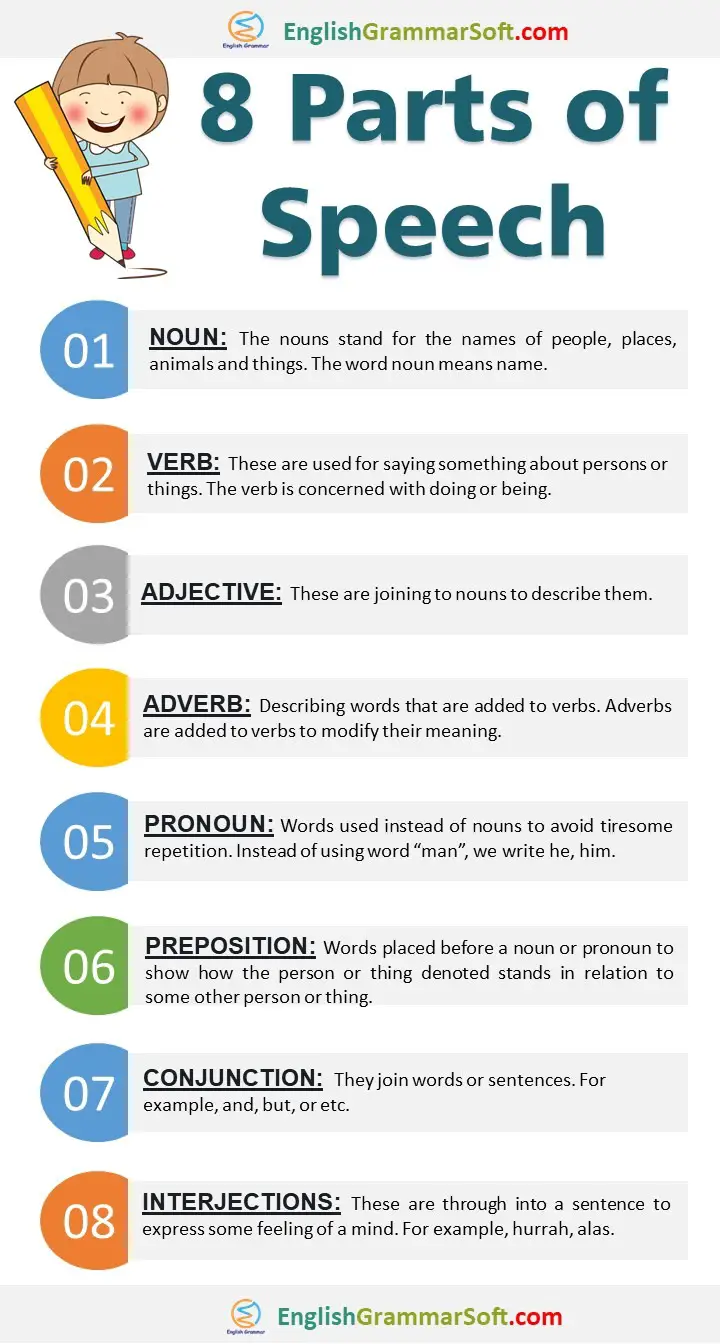
Read also: 71 Idioms with Meaning and Sentences

